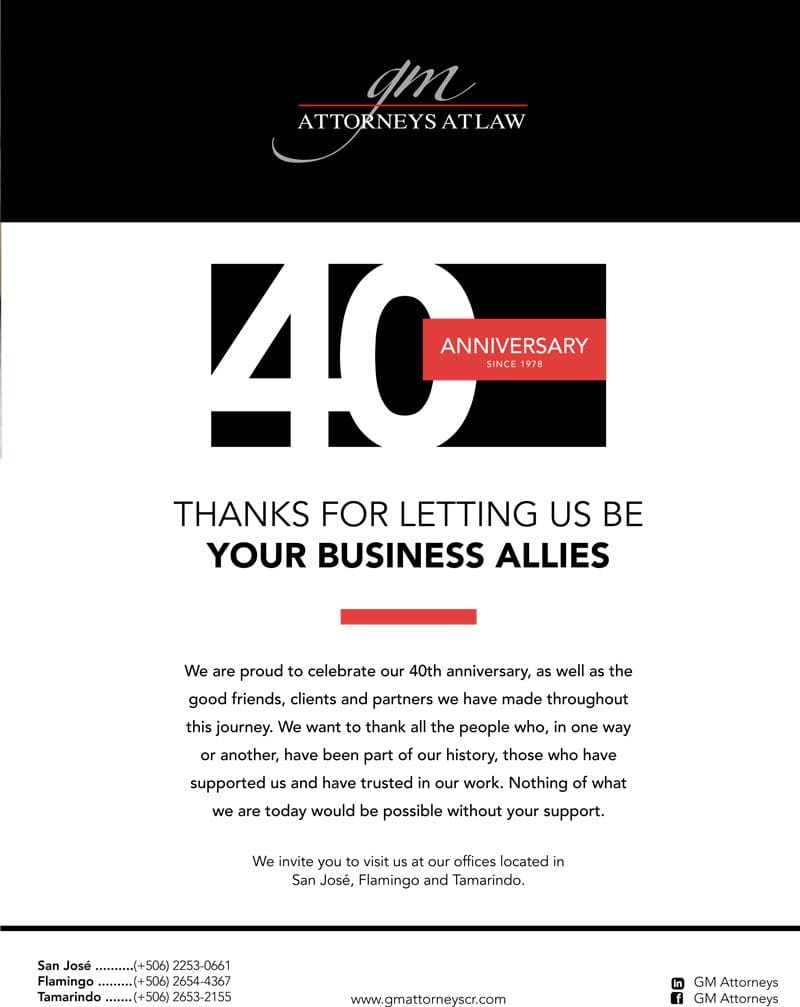
Options for Real Estate Subdivision in Costa Rica
Various options for real estate subdivision are available in Costa Rica, including the following most common forms of property co-ownership.
1. Condominiums
2. Agricultural parcels
3. Urbanizations
4. Corporate stock ownership
5. Derechos
Condominiums
This is a subdivided real estate model where the owner(s) of an individual piece of land at the same time co-own a percentage of the condo complex’s common areas. The owner of a single unit has full rights of ownership over a determined piece of land (typically the condo itself) and limited rights and dues pertaining to the common areas.
All condominiums have their own regulations known as bylaws, or Covenants, Conditions & Restrictions (CC&Rs), regarding Homeowners’ Association (HOA) rules, rights and obligations. Bylaws typically deal with HOA fee payments and meetings, restrictions for pets or for building in private areas and enjoyment of common areas, among other issues.
Condo declarations are subject to approval by the INVU (housing institution), municipalities and other government agencies.
Agricultural parcels
This applies to properties measuring at least 5,000 square meters, with access through an easement called “servidumbe agricola” that is more than 60 meters from the public road.
Owners in this instance are forbidden to conduct any business activities. Any structures built on the property are legally restricted to not occupy more than 15% of the overall land area.
Urbanizations
Urbanization developments are similar to condominiums in some respects, but have important regulatory differences.
The key characteristic is that the streets, green areas and parks within an urbanization become public property following legal procedures for giving over to the municipality.
Upon approval of the urbanization, segregation of lots within the publicly accessible development is allowed. Once each lot is duly registered with the National Registry, a proper title is issued and it is linked to the survey map.
Corporate stock ownership
Real estate is owned by a corporation that issues a percentage of its common capital stock to stockholders.
The rights and obligations for use and enjoyment of the real estate is indicated in the “preferred stock certificates” that each stockholder receives. All are duly reflected in the bylaws or incorporation deed and recorded in the corporate books.
This property ownership model varies on a case-by-case basis.
Derechos
This form of property subdivision allows for co-ownership under a single National Registry title.
Each owner can hold one or more derechos — for example, a percentage/fraction of the whole property or a specific number of square meters. Although the property still has only one title, each derecho is indicated by extension to the registered property number: 001, 002 and so on.
For example:
If spouses equally co-own a parcel of real estate the husband’s portion may be titled as 1234-001 and his wife’s 1234-002. Each derecho specifies the individual’s 50% ownership portion. Otherwise, the title information is the same.
When a property is divided into derechos, there is only one title and one survey map. However, each derecho can be independently owned and sold.
It is permissible for co-owners to establish derechos privately for their own reference, without being recorded on the National Registry.
For any form of property subdivision in Costa Rica, always consider the specific legal requirements and necessary actions. We are available to answer your questions at info@gmattorneyscr.com
HOA Meetings
Tax Time, Corporations and Property Owners
Corporate Tax Update
Power of Attorney in Costa Rica
Annual Tax Over Costa Rica Corporations
Due Diligence, Purchasing a Vehicle in Costa Rica
Costa Rica Income and Sales Tax
Estate Planning
Purchasing a Condominium in Costa Rica
Buying a Business in Costa Rica
Applying for Cost Rica Residency
Corporate Alert
Set Up a Corporation in Costa Rica

